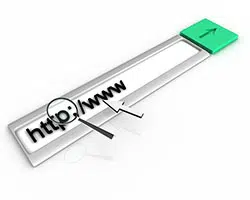 HTTP is the acronym corresponding to the English expression Hypertext Transfer Protocol , translated into our language as Hypertext Transfer Protocol . It is a communication protocol that enables the circulation of information through the World Wide Web ( WWW ).
HTTP is the acronym corresponding to the English expression Hypertext Transfer Protocol , translated into our language as Hypertext Transfer Protocol . It is a communication protocol that enables the circulation of information through the World Wide Web ( WWW ).
Likewise, it is interesting to know the etymological origin of these words that give shape to http:
* hyper , first of all, comes from the Greek “hyper”, which can be translated as “above” or “on”;
* text , on the other hand, comes from the Latin “textus” and which, in turn, derives from the verb “texere”, which is synonymous with “braid” or “weave”;
* The term transfer must be indicated that it comes from the Latin verb “transferre”, which is equivalent to “transfer” or “carry from one place to another”;
* The noun protocol , for its part, we have to establish that it emanates from Greek, specifically, from “protokollon”. This word is the result of the sum of two lexical components of said language: the word “protos”, which means “first”, and the noun “kollea”, which is synonymous with “glue” or “glue”.
A communication protocol is formed by a series of rules that indicate how a communication process should be carried out. The WWW , meanwhile, is a system for transferring documents linked together via the Internet (a decentralized set of computer networks).
What HTTP does is define the semantics and syntax used by the software elements that make up the architecture of the WWW . The protocol follows a scheme based on the requests that a client (such as a web browser) makes to a server (a computer where web pages are hosted), which in turn delivers the responses .
These requests are messages with a certain format. HTTP is responsible for determining which request methods can be used. The server, meanwhile, provides a response code, which is a number with information about what happened with the request.
HTTP , in short, constitutes the basis on which the WWW is developed. When an Internet user uses a browser (such as Google Chrome or Mozilla Firefox ) to visit a website, what they are doing is using an HTTP session to obtain what they see as a result: text, images, etc. For this reason, addresses entered into a browser's navigation bar begin with http , indicating the protocol that will be used to display the pages.
Other interesting data about the HTTP protocol are the following:
 * It was designed back in the 90s;
* It was designed back in the 90s;
* It must be established that between the user and the server there are elements that function as intermediaries. We are referring to some such as the router, the modem, the fiber optic or the ADSL;
* Those in charge of managing HTTP messages are the proxies, among which are filtering, caching, authentication, event registration, and load balancing of requests;
* Three fundamental characteristics of the HTTP protocol at hand stand out: that it is extensible, that it is simple and that it has sessions.
Since its launch in 1991, HTTP has had many versions , and in most cases you can see complete backward compatibility, that is, they are compatible with previous ones. The use of version numbers is described in RFC 2145 ( Request for Comments ), the name given to the publications issued by the IETF , the Internet Engineering Working Group, which specifies various aspects of its operation and that of others. networks, such as their procedures and protocols.
The first version was 0.9, which is now obsolete . In October 2018, version 3 was released, which presents changes such as the use of UDP ( user datagram protocol ) instead of TCP ( Internet protocol family ).
